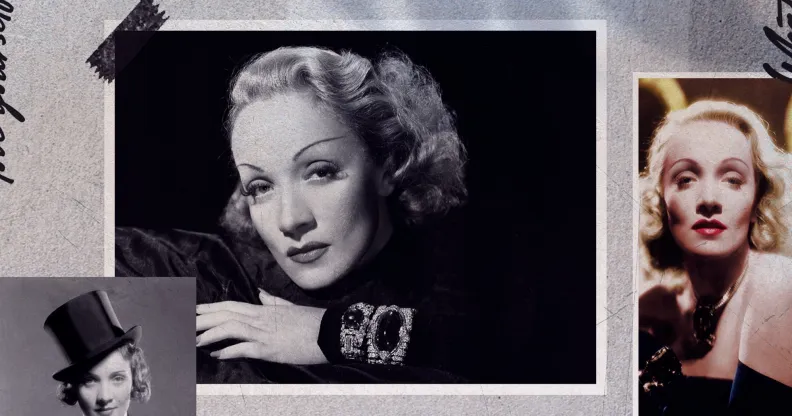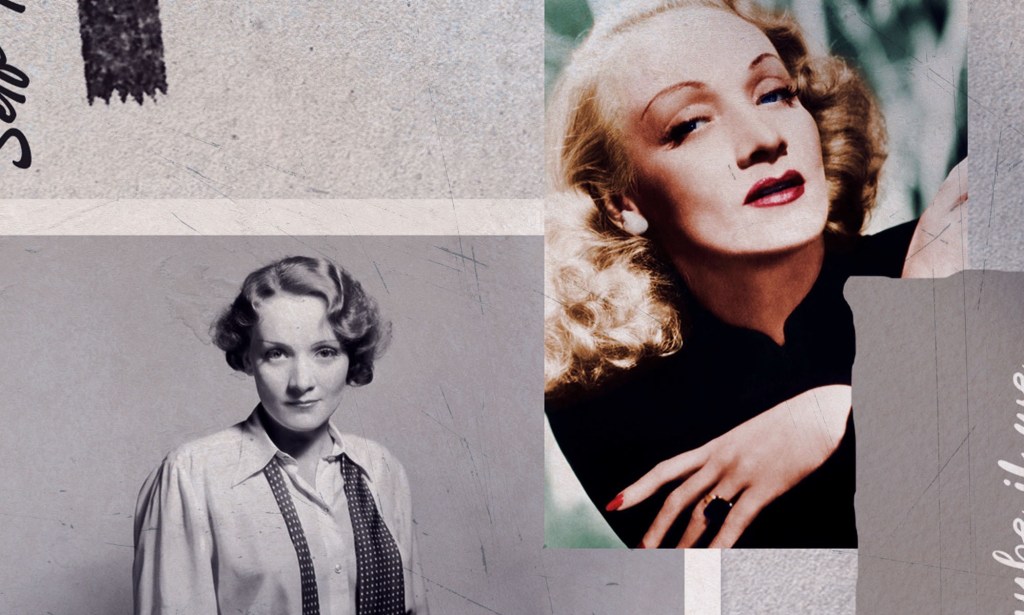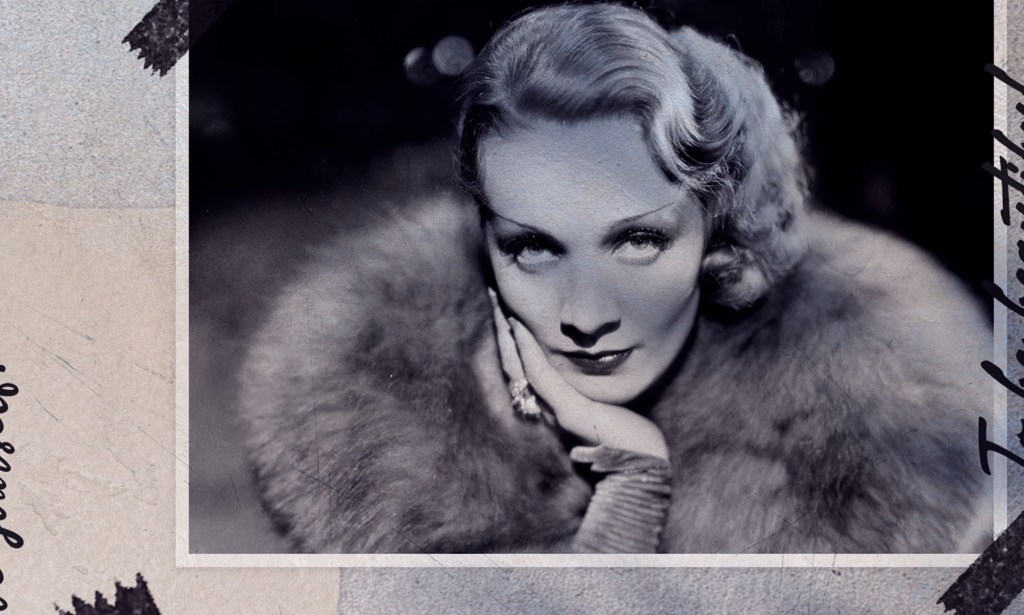How ultimate gay icon Marlene Dietrich paved the way for generations of LGBTQ+ Hollywood stars

Marlene Dietrich was one of the first queer icons. (Getty/Envato)
Marlene Dietrich paved the way for embracing queerness without apology during Hollywood’s Golden Age.
The German-born actor and singer enjoyed a glittering, decades-long career that spanned from silent cinema to the stage.
Her on-screen persona often encapsulated a very queer sense of androgyny, blurring of femininity and masculinity in both her fashion and expression of herself.
She was known for her fashionable style, diverse portrayals of women, advocacy for the American war effort and her passionate relationships with both men and women.
In her first American film, Morocco, Dietrich played a cabaret performer who flirts with men and women as well as danger.
The movie had a memorable scene where Dietrich, wearing a tuxedo and top hat, sings and then plants a kiss on a woman’s lips.

It was not only a rare flash of on-screen intimacy for the time, but it marked Dietrich as one of the first female leading actors to have a same-sex kiss in a major motion picture in the US.
Yet, it was nothing new to Dietrich, whose queerness was an open secret in Hollywood at a time when being out wasn’t an option. She reportedly had relationships with Anna May Wong and John F Kennedy, among others, and created a path for others to follow.
Marlene Dietrich’s early years
Marlene Dietrich, original name Marie Magdalene Dietrich, was born on 27 December 1901 in Berlin, Germany. When she was a small child, Dietrich adopted a compressed form of her first and middle names – a name that would, one day, decorate film posters across Hollywood.
She attended a private school, learned both French and English and eventually went on to study to be a concert violinist as a teen. But her initiation into the local nightlife, filled with cabarets and fierce music, made the prospect of a life as a classical musician seem dull.

A wrist injury was the final nail in the coffin. Instead, she turned her interest towards the stage and auditioned for a place at the Max Reinhardt Acting Academy. Though she didn’t get in, Dietrich was undaunted, and she continued acting a diverse series of small roles.
Her breakthrough role was Lola Lola in the 1930 musical comedy-drama The Blue Angel, directed by Josef von Sternberg. The role introduced audiences to a mesmerising, glamorous femme fatale persona with which Dietrich would be associated with throughout her career.
The film’s success led to Dietrich’s arrival in Hollywood, where she took up a contract with Paramount Pictures and made a quick succession of films – many in collaboration with von Sternberg. Their first together was Morocco.
Similar to her on-screen persona, Marlene Dietrich fostered close relationships with both men and women.
She married casting director Rudolf Sieber in 1923, and they welcomed their only child, Maria, the following year. The couple separated just a few years into their marriage, though they never divorced.
Dietrich’s sexuality was a non-secret in Hollywood even though being openly queer wasn’t an option at the time.
There were rumours that she was romantically involved with her Shanghai Express co-star Anna May Wong, a sapphic icon herself. She was also linked with Cuban-American writer Mercedes de Acosta and French cabaret businesswoman Frede.
However, the laws and prejudices of the time meant her relationships couldn’t fully come to light.

Dietrich referred to meetings with female romantic partners as ‘sewing circles’. This terminology quickly became code for gatherings of queer women in Hollywood, and Dietrich was the lynchpin in this underground society that fostered a place where women could meet with other women without fear of public reprisal.
The ‘sewing circle’ reportedly included stars like Greta Garbo, Ann Warner and a string of other big names from Hollywood’s Golden Age.
Dietrich was linked to romantic affairs with famous men including Cary Grant, Frank Sinatra, John Wayne and James Stewart. She also reportedly had a brief tryst with US president John F Kennedy.
Marlene Dietrich proudly lived life on her terms, with her head held high and helped others do the same.
She was a trailblazer during WWII, filing for US citizenship and condemning the Nazi regime in her native Germany. Dietrich helped people flee Germany, sold American war bonds and performed on the front lines for troops throughout the war.
When time on-screen began to fade, she spent the latter part of her career, performing numbers in her signature queer-coded top hat, tuxedo and tails. She also enjoyed an active romantic life well into her 70s.
Dietrich died on 6 May, 1992 in her flat in Paris at age 90, and thousands of onlookers mourned the loss of the famous actor and cultural icon during her two funerals.
Throughout her life, Marlene Dietrich was a symbol of glamour, beauty, sexual freedom and survival in the face of hostility. She remains an immortal queer legend of fashion, decadence and Hollywood.

